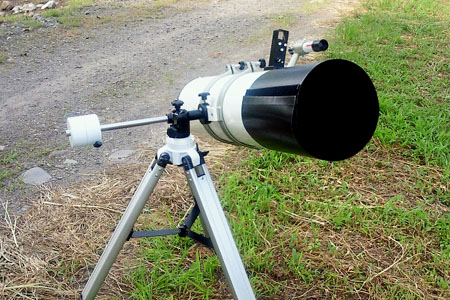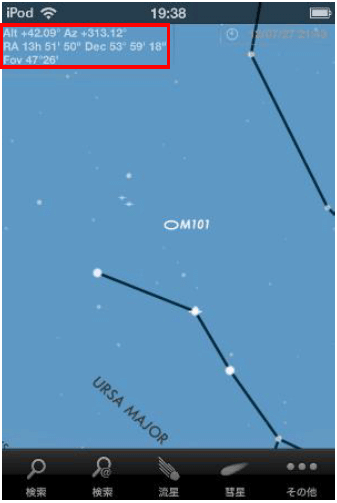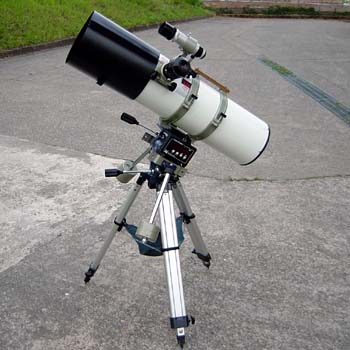


Updated July 29, 2012
My old mount system, Carton TA Alt-Az with
counter weights and NGC SkyVector, worked very nicely. But it was as heavy as a
German equatorial mount that often discourage me to use the system after I
introduced 46 cm.
 |
|
 |
 |
Upper right and left: Giro-WR with 5 kg weight.
Lower left: clinometer, lower right: the graduated ring that you can rotate.
Recently, free-stop mounts are getting popular and I purchased one of them;
Giro-WR made in Germany. This mount weighs less than 1 kg and is easy to set
up. I made a long shaft for a 5-kg ballast to take balance with 20 cm optical
tube assembly. This mount moves smoothly
and you can track at a magnification up to 300x.

iPod app Skymap pro. Alt., Az, RA. and RD. are shown top left.
NGC SkyVector is not installed; instead a graduated azimuthal ring and a clinometer are placed. Combining the clinometer, the azimuth ring and a planetarium app in iPod, you can easily identify deep sky objects!

|